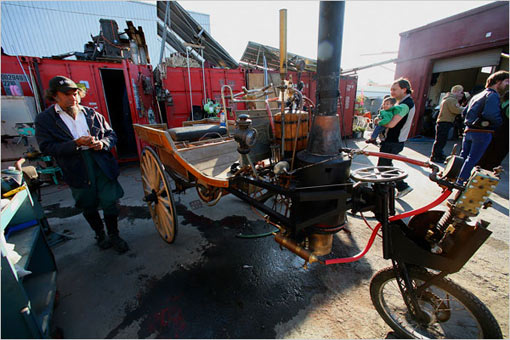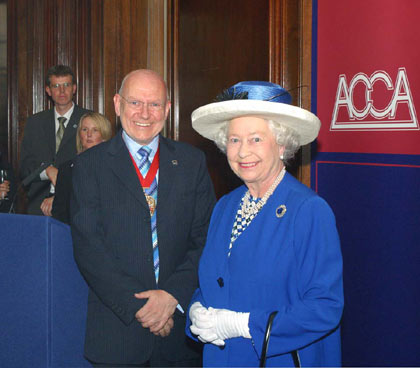You are hereWcP.Scientific.Mind's blog
WcP.Scientific.Mind's blog
Faster than a speeding bullet - world's first 1000-mph supersonic car "Bloodhound" to be built by British engineers
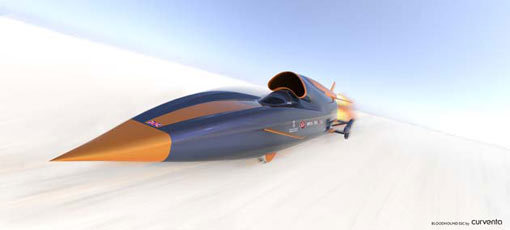
(quote)
British engineers have unveiled plans for the world's first 1,000-mph car, a muscular streak of gunmetal and orange designed not to break the world land speed record but to shatter it. Bloodhound SSC, named after the British cold war supersonic air defence missiles, will attempt to beat the existing record by more than 250mph.
The £12m car is to be announced today by Lord Drayson, the science minister. Working from an aircraft hangar in Bristol, the team's engineers have been working on the project in secret for the past 18 months. Calculations suggest the car could reach 1,050mph, fast enough to outrun a bullet from a .357 Magnum revolver. The car was proposed by Drayson, a racing car enthusiast, as a project to inspire a new generation of scientists and engineers, who are in desperately short supply in UK. The Bloodhound team plans to have the car built within a year, with the record attempt expected in three years.
Inventors in 800mi car race run on wood chips, cow dung, veg oil, no gas! Jagged Sierra Nevada, bleak flatness of Death Valley

(quote)
Wayne Keith, a hay farmer from Springville, Ala. (population 3,000), pulled into Berkeley last week driving a lime-green pickup truck that runs mostly on wood chips but sometimes cow dung, too. Keith, who wore dirt-flecked overalls and a trucker's cap, was in town to compete in the first Escape from Berkeley race, a kind of mini Cannonball Run to Las Vegas for drivers of vehicles that run on anything but petroleum. Two other racers relied on vegetable oil, one on alcohol and one on steam power to run his carriage (mostly for show; after a few miles, it was put on a trailer to traverse some of the dicier terrain).
A sweeping prominence, a huge cloud of relatively cool dense plasma is seen suspended in the Sun's hot, thin corona
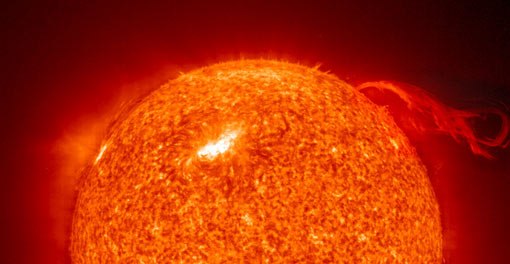
(quote)
A sweeping prominence, a huge cloud of relatively cool dense plasma is seen suspended in the Sun's hot, thin corona. At times, prominences can erupt, escaping the Sun's atmosphere. Emission in this spectral line shows the upper chromosphere at a temperature of about 60,000 degrees K (over 100,000 degrees F). Every feature in the image traces magnetic field structure. The hottest areas appear almost white, while the darker red areas indicate cooler temperatures.
The Sun is now in the quietest phase of its 11-year activity cycle, the solar minimum - in fact, it has been unusually quiet this year - with over 200 days so far with no observed sunspots. The solar wind has also dropped to its lowest levels in 50 years. Scientists are unsure of the significance of this unusual calm, but are continually monitoring our closest star with an array of telescopes and satellites. Seen here are some recent images of the Sun in more active times.
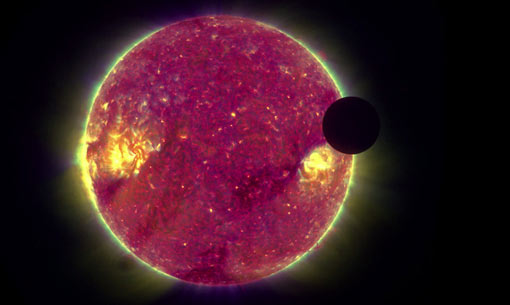
A transit of the Moon across the face of the Sun on February 25, 2007 - but not seen from Earth. This sight was visible only from the STEREO-B spacecraft in its orbit about the sun, trailing behind the Earth. NASA's STEREO mission consists of two spacecraft launched in October, 2006 to study solar storms. STEREO-B is currently about 1 million miles from the Earth, 4.4 times farther away from the Moon than we are on Earth. As the result, the Moon appears 4.4 times smaller than what we are used to. (NASA/STEREO) read more »
Turning out the lights - light pollution squanders energy, raises cancer risks, disturbs wildlife and ecosystem

(quote)
The night is not what it was. Once, the Earth was cast perpetually half in shadow. Man and beast slept beneath inky skies, dotted with glittering stars. Then came fire, the candle, and the light bulb, gradually drawing back the curtain of darkness and giving us unprecedented control over our lives. But a brighter world, it is becoming increasingly clear, has its drawbacks. A study finding that breast cancer is nearly twice as common in brightly lit communities as in dark ones only added to a growing body of evidence that artificial light threatens not just stargazing but also public health, wildlife, and possibly even safety.
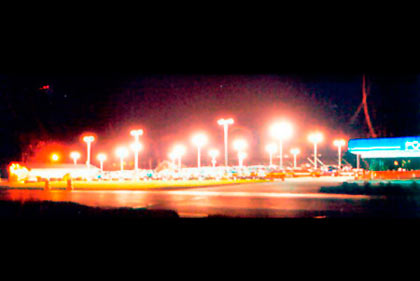
Those findings are all the more troubling considering that an estimated 30 percent of outdoor lighting - plus even some indoor lighting - is wasted. Ill-conceived, ineffective, and inefficient lighting costs the nation about $10.4 billion a year, according to Bob Gent of the International Dark-Sky Association, a nonprofit that aims to curtail light pollution, and it generates 38 million tons of carbon dioxide a year. read more »
Queen Elizabeth II buys world largest wind turbine - towers over Big Ben, to light up thousands of British homes

(quote)
It's been a century or so since Britain ruled the waves, but Queen Elizabeth II will soon reign over the wind. Earlier this year the Crown Estate, which manages royal property worth $14 billion and controls the seas up to 14 miles off the British coast, agreed to purchase - for an undisclosed sum - the world's largest wind turbine.
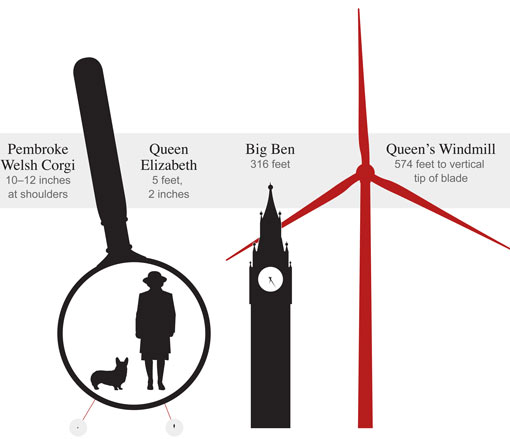
It's a 7.5-megawatt monster to be built by Clipper Windpower of Carpinteria, Calif. Now the Royal Turbine is getting even bigger: Clipper has revealed to Fortune that Her Majesty's windmill has been super-sized to ten megawatts, producing five times the power generated by typical big turbines currently in commercial operation. The giant's wingspan stretches the length of two soccer fields. At 574 feet, the turbine soars over Big Ben and roughly equals 111 Queen Elizabeths (the actual queen) plus one corgi stacked on top of one another.
World's most exclusive club: Russia, US, now China have technology to allow their astronauts to walk in space
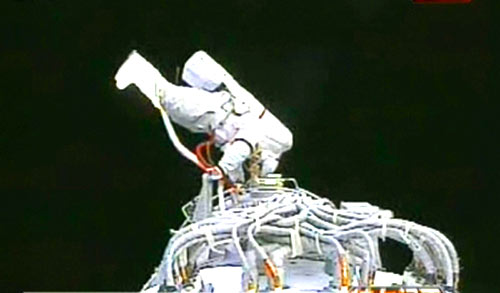
(quote)
China left its mark in space history Saturday, successfully turbocharging its space program into an orbit that could see a Chinese man walk on the moon before the U.S. has a chance to get back there in 2020.
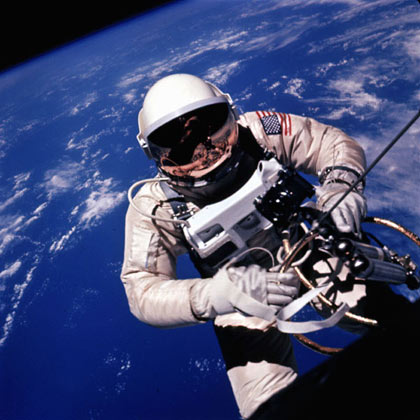
Shenzhou Vll has been successfully orbiting 343 kilometres above Earth every 90 minutes since it blasted off from the Jiuquan launch centre in northwest Gansu province on Thursday night. It was in its 29th orbit when Zhai made his historic walk. China sent its first man into space in 2003. Two more went up in 2005 and the trio this year are on the country's third manned mission.
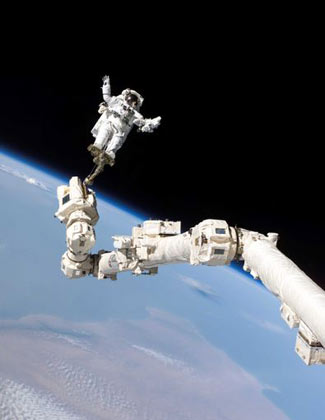
When Zhai stepped out of the capsule, he confirmed China's membership in the world's most exclusive club: only Russia and the United States have the technology to allow their astronauts to walk in space.
Russia: Alexey Leonov, the pioneer (March, 1965) read more »
Countdown begins for China’s first spacewalk: Shenzhou-7 spaceship launches into orbit with 3 Chinese astronauts

(quote)
After three decades of hoping, 10 years of training, and at least 12 hours preparing his spacesuit, Zhai Zhigang is expected to make history in just 20 minutes tomorrow as the first Chinese astronaut to do a space walk. The 42-year-old former fighter pilot will don a £2m, ten-layered Chinese-designed suit, weighing 120kg (265lb), to exit the Shenzhou VII module.
The Chinese Shenzhou VII spacecraft blasted off at 9:07 p.m. Thursday, carrying three Chinese astronauts into space on this country’s third manned space mission in five years. The Chinese government has spent billions of dollars in recent years building up a space program that it hopes will help China establish a space station by 2020 and eventually will put a man on the moon, accomplishments that would certainly bring the country international prestige.












